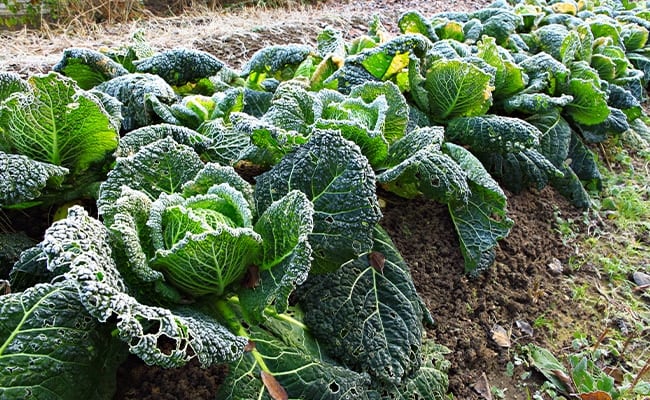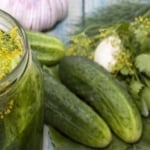Who Are The Three Ice Men?
Perhaps you’ve heard the old proverb that warns not to plant until after the “Three Ice Men” have passed, but do you know who these mysterious Ice Men are? We explain.

Perhaps you’ve heard the old proverb that warns not to plant until after the “Three Ice Men” have passed, but do you know who these mysterious Ice Men are? The tradition comes from Northern Europe, and is tied to the successive feasts of St. Mamertus, St. Pancras, and St. Servatius, whose respective days occur on May 11, 12, and 13. They are also sometimes referred to as the “Three Chilly Saints.”
Who Are The Three Ice Men?
In Europe’s not-too-distant past, parts of the continent remained rather cold through the middle of May, making planting before then risky. German and Swiss lore refers to mid-May as “Iceman Days,” while an old French saying states “Saint Mammertius, Saint Pancratius, and Saint Gervatius (the Francophone spelling of the three saints’ names) do not pass without a frost.” Because the agrarian people of medieval Europe weren’t likely to be literate, let alone aware of calendar dates, they measured time by observing nature and by the church calendar.
Remembering that the last frost of the year generally falls around the feast of Servatius was a useful marker for pre-modern farmers.
More “Chilly Saints” Lore
In some regions, the lore goes on to note that rain will fall on Feast of St. Sophia, marking the beginning of planting season. For this reason, May 15 is referred to as “Zimna Zoska,” or “Cold Sophia” in Poland.
One point of interest is that this bit of lore dates back to before the creation of the Gregorian calendar in 1582, at which time most days of the year shifted somewhat. While the feasts of the Three Chilly Saints are still celebrated from May 11-13 on our calendar, these days used to fall a little later in the astronomical year: May 19-22.
Join The Discussion
Do you wait until after the Ice Men to plant your garden in spring? Or maybe you follow the Mother’s Day Rule? Let us know in the comments below!
Related Articles
Gardening by the Moon Calendar

Jaime McLeod
Jaime McLeod is a longtime journalist who has written for a wide variety of newspapers, magazines, and websites, including MTV.com. She enjoys the outdoors, growing and eating organic food, and is interested in all aspects of natural wellness.






We live in Colorado at 8400 feet above sea level and the only way we can plant early is to start almost everything indoors in a grow tent, then transplant them into our greenhouse by end of April. Tomatoes, cabbage, zucchini, carrots, strawberries, snap peas and strawberries are all growing well out there. Peppers will be transplanted mid to end of June to avoid loss. With wildlife and weather fluctuations here, the best thing to do is invest in a good greenhouse complete with water, heat and air circulation.
After Memorial Day in Northern Michigan
In northern Arizona at 6300Ft, i waite until around June 1st to plant.Still to cold at night to plant now(May11,12,or13)
Here is the Colorado Rocky mountains we are still experiencing cold nights in late June this year that can damage or kill tomatoes, peppers, potatoes and squash unless covered at night.
My dad always said plant after Easter. So I still follow his rule. It’s served me well.
Memorial Day was “Planting Day” in our family when I was a child. Many I year I bicycled to my Grandparents’ home to help my grandfather with his planting while we listened to the Indy 500 Race on the radio. No transistors back in the Forties, just a long extension cord and an old radio with lots of tubes.
We always wait until mid-May, or until the last frost day is forecasted to plant. But usually, mid-May. Today, is June 19th, and it was 44 degrees this morning. I’m sure the tomatoes, squash, and cukes are not happy campers. I hope the green beans and butter beans are okay, too. The weather has been jerking us around. Upper 80s and low 90s, then beautiful 70s. Then back up. Then down.
Shenandoah Valley in Virginia.
Derby Day is my calendar milestone for planting.
I planted after Mother’s Day but Mother’s Day came early this year. I’ve had to cover up a couple of my plants because it has gotten so cold at night. My peonies always bloom by Mother’s Day. That’s what I always gave my mother for Mother’s Day. They’re just budding now.?
Our mother always fixed the ground for the garden starting 2 weeks before Good Friday. Come Good Friday everyone was up planting the garden sometime just barely a day break the garden had to be completely planted that day and watered good. She said her mother and grandmother always did the same thing, and come Easter morning you could see the ground breaking open and a little sprout coming out. This was the teaching of the crucifying of Christ. The soldiers came and got Christ at day break and He was beaten and went thru struggles and all kind of pain all day long and at the end of the day the wrap in in sroudded muslin cloth and buried him and on the 3rd day(Easter) He arose from the grave with new life and new body. (My mother’s mother would take and old thin rag of muslin or cheese cloth with a handful of fertilizer in it and wrap the seed in it then bury it.